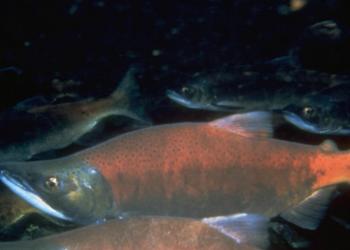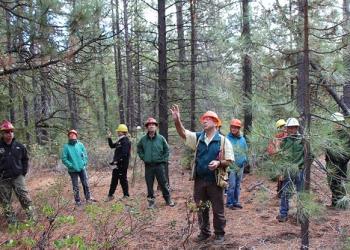About the Northwest Forest Plan Amendment
Home > About the NW Forest Plan Amendment
For more than 30 years, the Northwest Forest Plan has been the foundation for conservation and community support in Northern California, Oregon, and Washington. Initially designed to balance environmental and economic needs, including habitat protection for the Northern Spotted Owl, the Northwest Forest Plan now requires updates to address new challenges and opportunities.
Why does the Northwest Forest Plan Need an Amendment?
Northwest Forest Plan area vicinity map, select image to open in new window.
During the three decades since the establishment of the Northwest Forest Plan there have been significant changes in local economic, social, environmental, and cultural conditions across the Northwest Forest Plan landscape, including changes in forest densities, increased risks to forests and communities from wildfires, and changes in public uses of the area.
Amending the Northwest Forest Plan will help provide an updated framework to guide management that considers current science and local economic, social, and environmental conditions. This amendment will update direction for a subset of the 1994 Northwest Forest Plan area – 19 million acres of National Forest lands.
What Will the Amendment Achieve?
- Reduce Wildfire Impacts: Mitigate the risks of severe wildfires through proactive management and restoration.
- Support Communities: Provide sustainable resources and economic growth for rural communities and enhanced co-stewardship with Tribes.
- Modernize Forest Management: Use the best available science to adapt to changing conditions.
Key Themes of the Amendment
Recognizing the increasing threat of severe wildfires, the proposed amendment prioritizes proactive fire management to protect communities and forests.
- Strategic Planning for Wildfire Resilience: Introduces Community Wildfire Protection Zones for fire management, emphasizing community safety and risk reduction.
- Ecosystem Restoration: Supports the reintroduction of fire to maintain fire-adapted ecosystems, sustain meadows, and restore other historically-occurring ecosystems where they’ve been encroached.
- Collaboration with Communities: Emphasizes use and development of local and regional wildfire protection plans, while adding interim tactics to safeguard critical infrastructure.
A machine operator moving timber logs on Clackamas River Ranger District.
The amendment seeks to ensure forests contribute to sustainable economic growth for communities across the Northwest Forest Plan area:
Predictable Timber Harvest: Enhances predictability in timber supply while balancing conservation needs.
Job Creation through Restoration: Supports workforce development in forest management, emphasizing youth training and career opportunities.
Community Collaboration: Encourages local businesses, Tribes, and underserved communities to participate in contracts and agreements for restoration projects.
Recreation and Tourism: Recognizes the economic importance of outdoor recreation, which supports local businesses and fosters community well-being.
The proposed amendment enhances forest stewardship through the use of ecological forestry, including:
Tailored Management for Dry and Moist Ecosystems: Differentiates strategies for drier, fire-prone forests and wetter fire-infrequent forests, promoting healthy and resilient.
Sustainable Forestry Practices: Combines restoration and timber harvest activities to maintain ecological health and economic output.
Integrated Knowledge and Innovation: Utilizes modern forestry methods to improve resilience while preserving essential ecosystem services.
Retaining Mature and Old-Growth Forest Conditions: Expands conservation efforts across all land-use allocations, including Matrix lands.
Tribal Inclusion
The amendment provides opportunities for collaboration with Tribes to integrate cultural practices, such as burning and gathering, into forest management. The focus is on including Tribes in forest planning and implementation to achieve common goals.
Adapting to Changing Conditions
Addressing evolving environmental factors, the amendment promotes forest resilience to disturbances such as drought, pests, and shifting weather patterns.
Video overview about Proposed Amendment to the Northwest Forest Plan
Amendment Process & Public Engagement Steps

There are opportunities for public participation throughout the amendment process. The amendment process follows five key steps. Learn where we are in the process and check for engagement opportunities.
Endangered Species Consultation

As we amend the Northwest Forest Plan, the Forest Service is required to consult with U.S. Fish and Wildlife Service and National Marine Fisheries Service on the amendment’s potential effects towards federally listed species and their critical habitat.
Learn about Forest Planning

The National Forest Management Act of 1976 requires national forests or grasslands managed by the Forest Service to develop and maintain an effective land management plan. The process of developing and revising forest plans, along with the required contents is outlined the 2012 Planning Rule.







